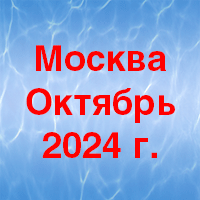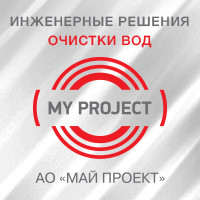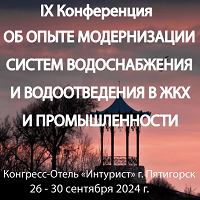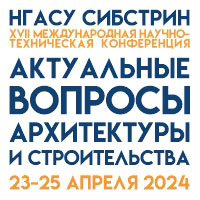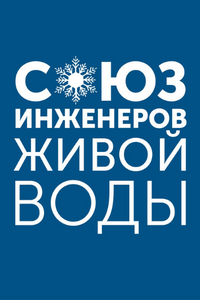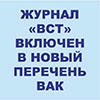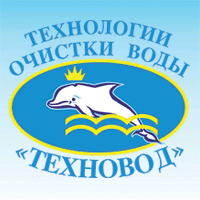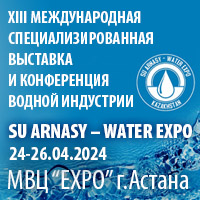№4|2017
WASTEWATER TREATMENT
bbk 000000
UDC 628.31:661.5
The effect of membrane chemical washing on biological treatment processes
Summary
The results of research studies in the field of biomembrane treatment of dairy wastewater are presented. The experimental studies were carried out during four months. As a model effluent milk solution was used with addition of nutrients in the form of mineral salts – potassium monophosphate, ammonium chloride and sodium nitrate in ratios corresponding to the concentrations of these substances in original wastewater after physical and chemical treatment. The experiment was aiming at determining the process and kinetic characteristics of biological processes in a membrane bioreactor. The studies of the model wastewater in a pilot bioreactor showed that at 7–9 g/l sludge dosage and 0.36 m3/(m2·day) specific flow rate corresponding to the regular operation mode of flat-frame membranes the operation of the plant without chemical washing was possible for about two months. It was stated that membrane washing with citric acid at 1000 mg/l solution concentration (5–20 mg/l acid concentration in the membrane tank) provided for reducing the rate of biochemical processes with only mixed liquor acidification. The citric acid toxicity did not appear at mixed liquor pH in the range of 6.83–7.17. The study of membrane washing with sodium hypochlorite solution in concentration of 2000 mg/l as NaOCl showed the competitive inhibition of the organics oxidation rate with practically complete inhibition of biochemical processes at the active chlorine concentration in the reactor more than 26.1 mg/l. The time of restoring the original rate of organics oxidation at 6.6 mg/l active chlorine concentration in the reactor was 220 minutes after wastewater supply had been started and permeate had been removed.
Key words
biological treatment , membrane bioreactor , kinetic constant , dairy wastewater , membrane chemical washing , specific oxidation rate
The further text is accessible on a paid subscription.
For authorisation enter the login/password.
Or subscribe
REFERENCES
- Rosenberger S., Kruger U., Witzig R., Manz W., Szewzyk U., Kraume M. Performance of a bioreactor with submerged membranes for aerobic treatment of municipal wastewater. Water Research, 2002, v. 36 (15), pp. 413–420.
- Rosenberger S., Laabs C., Lesjean B., Gnirss R., Amy G., Jekel M., Schrotter J.-C. Impact of colloidal and soluble organic material on membrane performance in membrane bioreactors for municipal wastewater treatment. Water Research, 2006, v. 40 (4), pp. 710–720.
- Shvetsov V. N., Morozova K. M., Nechaev I. A., Kiristaev A. V. [Theoretical and technological aspects of the use of biomembrane technologies for advanced wastewater treatment (part 2)]. Vodosnabzhenie i Sanitarnaia Tekhnika, 2007, no. 1, pp. 10–13. (In Russian).
- Stepanov S. V., Solkina O. S., Morozova K. M., Stepanov A. S., Sokolova T. V. [Study of dairy wastewater biological treatment with model effluent]. «TEKHNOVOD–2016» water treatment technologies. Proceedings of IX International Scientific-Practical Conference, Rostov-on-Don, October 5–7, 2016. Novocherkassk, Lik Publ., 2016, pp. 210–215. (In Russian).
- Stepanov S. V., Solkina O. S., Morozova K. M., Stepanov A. S., Sokolova T. V., Zhukova M. A. [Biological treatment of dairy industry wastewater in a membrane bioreactor (part 1)]. Vodosnabzhenie i Sanitarnaia Tekhnika, 2016, no. 12, pp. 28–34. (In Russian).
- Stepanov S. V., Solkina O. S., Morozova K. M., Stepanov A. S., Sokolova T. V., Zhukova M. A. [Biological treatment of dairy industry wastewater in a membrane bioreactor (part 2)]. Vodosnabzhenie i Sanitarnaia Tekhnika, 2017, no. 2, pp. 60–65. (In Russian).
- Rogovskaia Ts. I. Biokhimicheskii metod ochistki proizvodstvennykh stochnykh vod [Biochemical method of industrial wastewater treatment. Moscow, Stroiizdat Publ., 1967, 140 p.].


